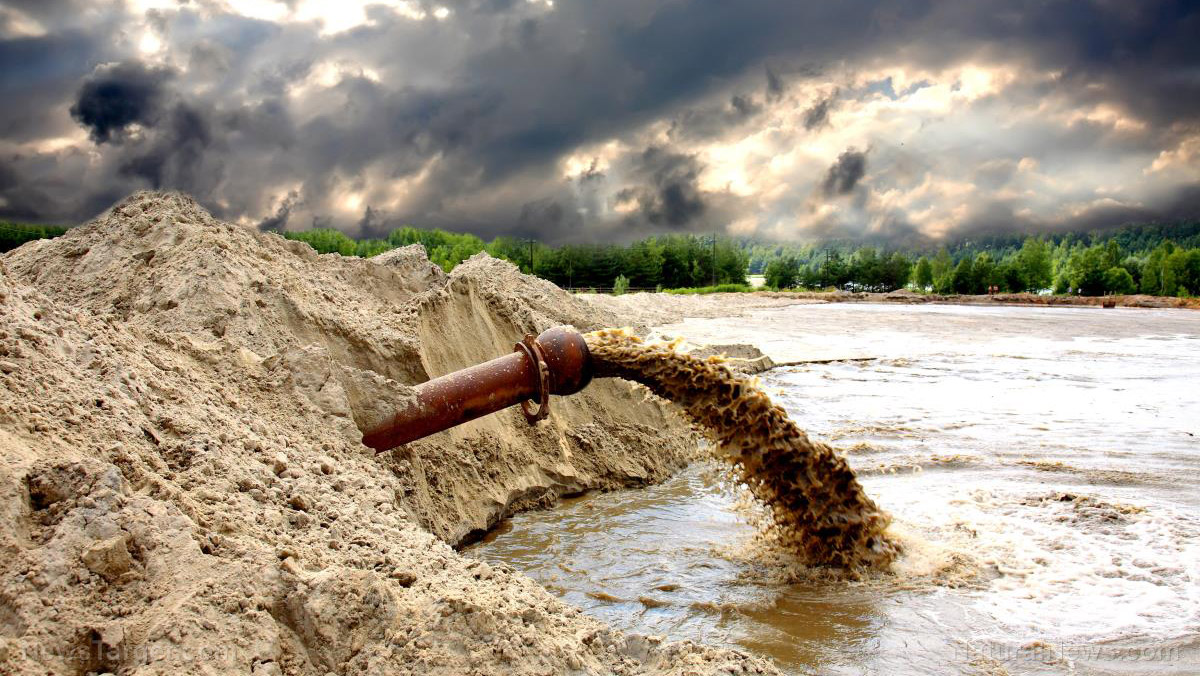New computer models show that more than 100 million people in India are affected by excess fluoride in groundwater
10/22/2018 / By Tracey Watson

Good, clean, pure drinking water from deep within the Earth – that’s what over 100 million people in India think they’re getting from their underground wells. Instead, what they’re drinking is toxic water contaminated with excessive amounts of fluoride. Computer model research conducted by scientists from the Swiss Federal Institute of Aquatic Science and Technology (EAWAG), published in the journal Environmental Science and Technology, confirms that natural weathering is causing excess fluoride to collect underground across India, resulting in pervasive groundwater contamination.
With 80 percent of the nation’s sewage, as well as industrial waste and agricultural runoff all ending up in India’s lakes and rivers, it’s easy to understand that many people feel safer drinking water from underground wells. Nonetheless, the high levels of fluoride in this water pose their own risks, including an elevated risk of dental and skeletal fluorosis.
Health risks of fluoride exposure
While fluoride occurs naturally in water in small amounts, the safe limit set by the World Health Organization (WHO) is 1.5 milligrams per liter — and even this level is hotly disputed by many experts. In 2012, the U.S. Department of Health and Human Services (HHS) amended its Public Health Service recommendations to mandate that fluoride levels not exceed 0.7 milligrams per liter, rather than the 0.7 to 1.2 milligrams per liter that had been recommended for the previous 50 years.
Long-term exposure to amounts higher than even this low level can lead to both dental and skeletal fluorosis.
Dental fluorosis is a condition in which fluoride exposure during enamel formation (the early years of life) results in tooth discoloration and even damage. Skeletal fluorosis, on the other hand, is a more serious condition in which patients initially experience joint pain and stiffness along with gastric problems, and which later results in painful bone disfigurement.
In addition to the risk of fluorosis, studies have found that children exposed to high levels of fluoride demonstrate lower IQ levels. A study conducted in New Zealand and led by a former Environmental Protection Agency (EPA) scientist compared the fluoride exposure of groups of children with low IQs to those whose IQs are higher and found that the higher the exposure to fluoride, the lower the IQ.
“The significance of this peer reviewed risk analysis is that it indicates there may be no actual safe level of exposure to fluoride,” said Dr. Hirzy. “Fluoride may be similar to lead and mercury in having no threshold below which exposures may be considered safe.” [Emphasis added]
After taking over 13,000 fluoride measurements from all over the country, the EAWAG researchers found that more than 120 million Indian people live in areas where groundwater is contaminated with fluoride levels in excess of even the WHO’s conservative 1.5 mg stipulation. (Related: Fluoride in private wells linked to decreased IQ.)
Causes of elevated fluoride levels in groundwater
According to the British Geological Survey (BGS), excessive levels of fluoride in groundwater are generally found in areas with:
- crystalline rocks containing fluorine-rich minerals, especially granites and volcanic rocks
- shallow aquifers in arid areas experiencing strong evaporation
- sedimentary aquifers undergoing ion exchange
- inputs of geothermal water
Unfortunately, there is very little that can be done about this problem because it most often occurs in developing countries with limited water supply and meager resources to try to implement water treatment techniques. (Related: Scientists STUNNED as first-of-its-kind study reveals strong link between fluoridated water and ADHD.)
India is a country bursting at its seams in terms of population, and with explosive growth in industry – and the pollution that accompanies such growth – the country is sure to face a massive drinking water crisis in the near future. Learn more about water fluoridation at CleanWater.news.
Sources for this article include:
Tagged Under: clean water, Dental fluorosis, disease causes, environment, Fluoride, groundwater, groundwater contamination, India, IQ, skeletal fluorosis, tap water, toxic water, toxins, underground wells, Water contamination, water filters



















